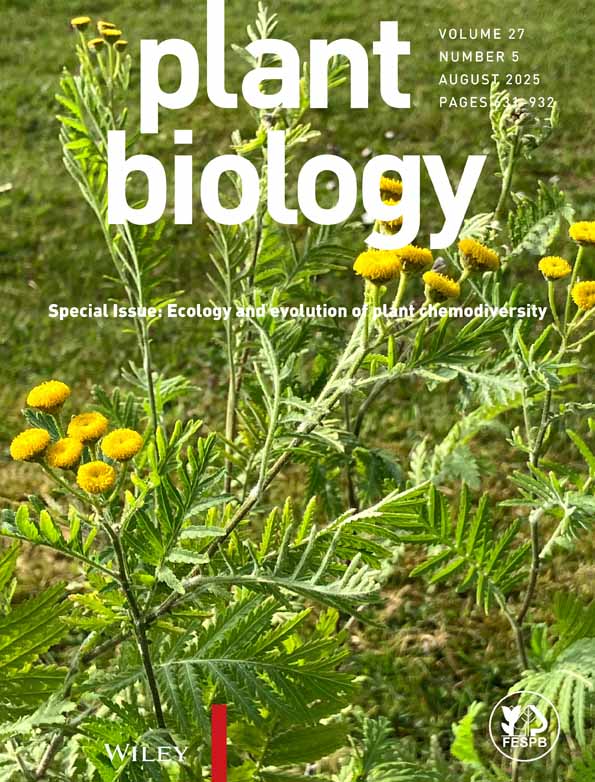Fusicoccin Binding to its Plasma Membrane Receptor and the Activation of the Plasma Membrane H+-ATPase. II. Stimulation of the H+-ATPase in a Plasma Membrane Fraction Purified by Phase-partitioning
Abstract
The effect of fusicoccin (FC) on the activity of the PM H+-ATPase was investigated in a plasma membrane (PM) fraction from radish seedlings purified by the phase-partitioning procedure.
FC stimulated the PM H+-ATPase activity by up to 100 %; the effect was essentially on Vmax with only a slight decrease of the apparent KM of the enzyme for ATP.
FC-induced stimulation of the PM H+-ATPase was evident within the first minute and maximal within five minutes of membrane treatment with the toxin indicating that transmission of the signal from the activated receptor to the PM H+-ATPase is very rapid.
Both FC-induced stimulation of the PM H+-ATPase and FC binding to its receptor decreased dramatically upon incubation of the membranes in ATPase assay medium at 33 °C in the absence of FC, due to the lability of the free FC receptor.
FC-induced stimulation of the PM H+-ATPase was strongly pH dependent: absolute increase of activity was maximal at pH 7, while percent stimulation increased with the increase of pH up to pH 7.5; FC binding was scarcely influenced by pH in the pH range investigated. Taken as a whole, these results indicate that FC binding is a condition necessary, but not sufficient, for FC-induced stimulation of the PM H+-ATPase.




